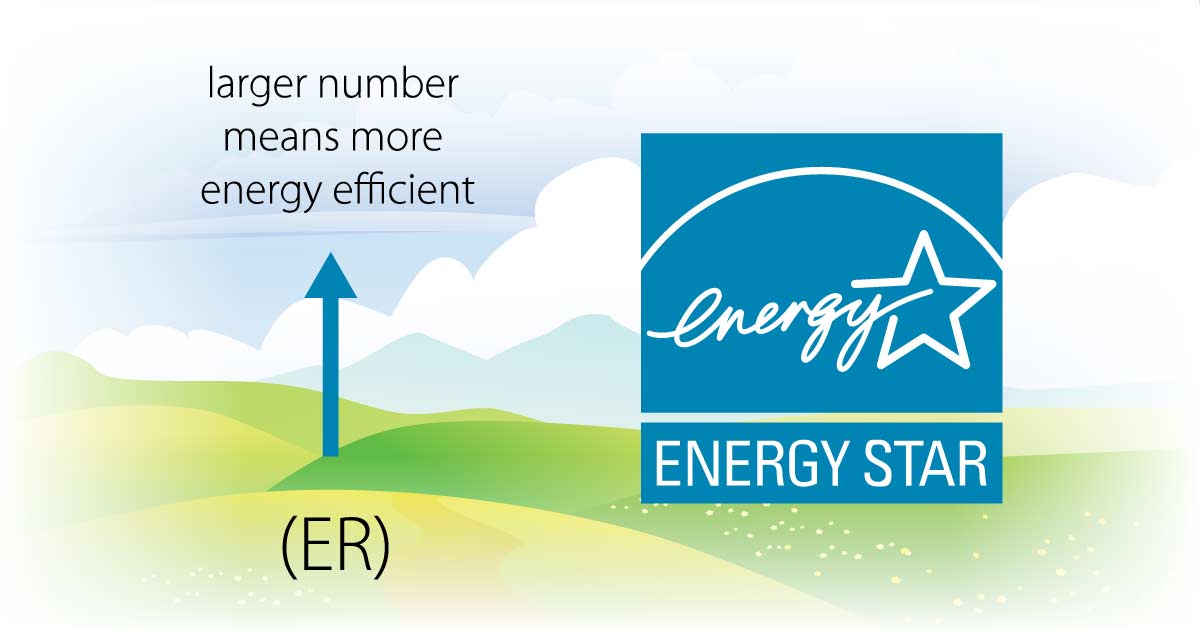Understanding Windows
Share
Having trouble reading window ratings?

Energy Star Certification
The Energy Star symbol indicates that a product meets or exceeds high-efficiency standards. Currently, more than 70 product categories can qualify for the symbol and, typically, a certified model is in the top 15 to 30 percent of its class for energy performance.
Every ENERGY STAR® certified window, door and skylight is required to leave the factory with a removable label that shows:
- its certified performance ratings (U-factor, Energy Rating, etc.)
- the climate zone(s) for which it is certified
- a description of the product (type, materials, glazing, etc.)
- its certification information
Energy Rating (ER)
The Energy Rating (ER) for window products is an evaluative rating made by an authorised neutral organisation. All products are assessed using a strict common procedure. A window’s ER rating is a measure of its overall performance, based on the three factors below:
- solar heat gain
- heat loss through frames, spacer and glass
- air leakage heat loss
Higher is better - the higher the rating, the better the performance.
U-Value also known as U-factor
The terms refer to a measure of the heat gain or loss through glass due to the difference between indoor and outdoor air temperatures. The U-value describes how well a product prevents heat from escaping a home or building. U-value ratings generally fall between 0.2 and 1.2. U-factor is particularly important during the winter heating season.
Lower is better - the lower the U-value, the better the product is at keeping heat inside the home.
R-Value
The R-value represents the resistance a material has to heat flow. It measures the effectiveness of insulation in stopping heat flow. There is no set rating scale
Higher is better - the higher the R-value, the greater the heat resistance.
CR-Value
The CR-value indicates how well a product resists the formation of condensation (Condensation Resistance). CR is reported on a rating scale of 1 to 100.
Higher is better - the higher the number, the better a product is at resisting condensation.
Visual Transmittance (VT)
Visual transmittance (VT) indicates the amount of light in the visible portion of the spectrum that passes through a glazing material.
Lower is better - the lower the number, the less of the sun’s heat is transmitted through the glass.
Solar Heat Gain Coefficient (SHGC)
The SHGC is a measurement of the heat transmitted and absorbed and subsequently released inward. SHGC is expressed as a number between 0 and 1.
Lower is better - the lower the coefficient, the less inward heat it transmits or the greater the shading ability of the glazing.
What is an Energy Star Energy Rating?

For apples-to-apples comparisons
Energy Star certified products are tested by authorized neutral organizations using a standardized procedure to meet strict efficiency specifications that make it easier to compare similar products from different companies.
With energy-efficiency in mind, Energy Star certified windows can save you money on your energy bills and help contribute collectively to reducing carbon emissions.
According to Natural Resource Canada (August 2017), Energy Star certified windows can save you an average of 8% on your energy bills as compared to standard windows. Windows that qualify for Energy Star’s most efficient windows are up to 40% more efficient than a standard window.
Want to window comparisons? Take a look at Energy Star’s most efficient window products.
The Energy Star certification (CSA A440.2 Standard) process measures 3 variables that are applied to a formula that calculates a windows Energy Rating (ER):
- U-factor (UF) - heat loss through frames, spacer and glass
- Solar heat gain coefficient (SHGC) - heat transmitted and absorbed and subsequently released inward
- Air leakage (AL) - cold air hot air moving through the window or door
These variables are factored into Energy Star’s Energy Rating (ER) - a unitless value that represents the overall energy efficiency performance of the window or door being tested.
Energy Star summary for Ottawa:
- The larger the ER rating number, the more energy-efficient the window.
Want to know if you are getting the most energy-efficient window? Talk to your local window specialist. They’ll help you find the perfect window, that will maximize your home comfort and minimize your energy costs.
